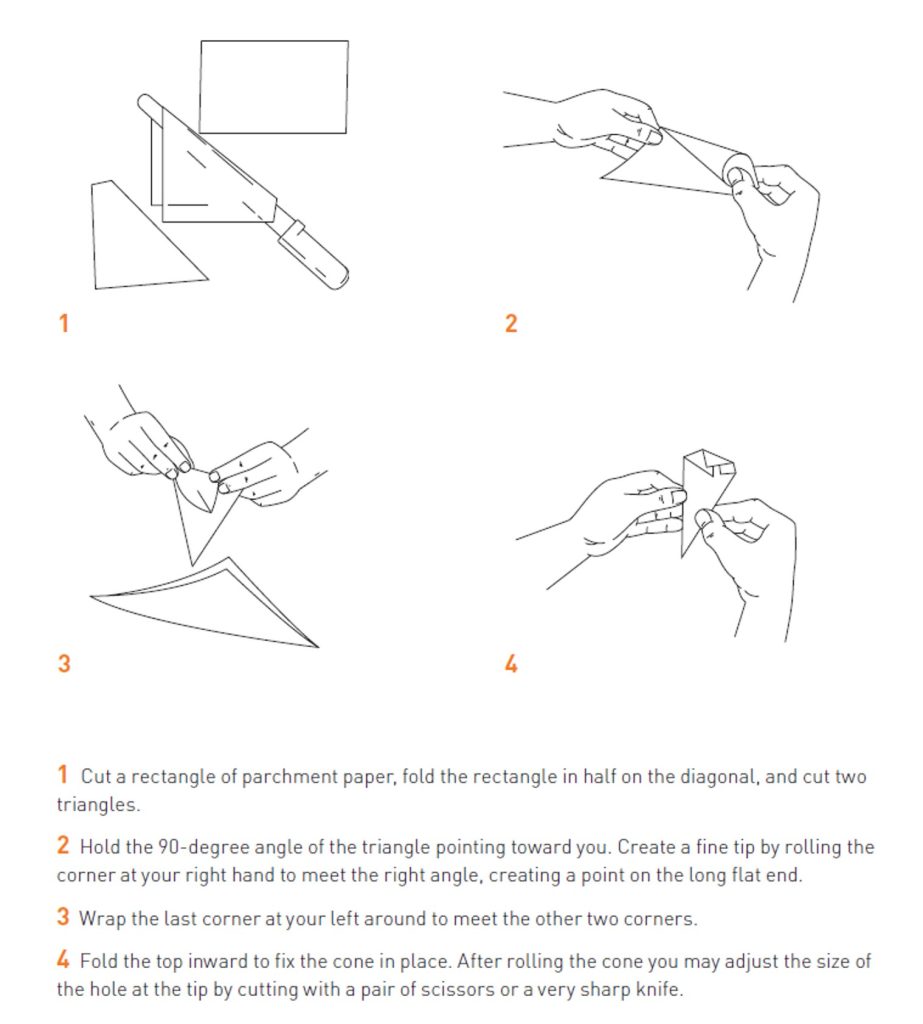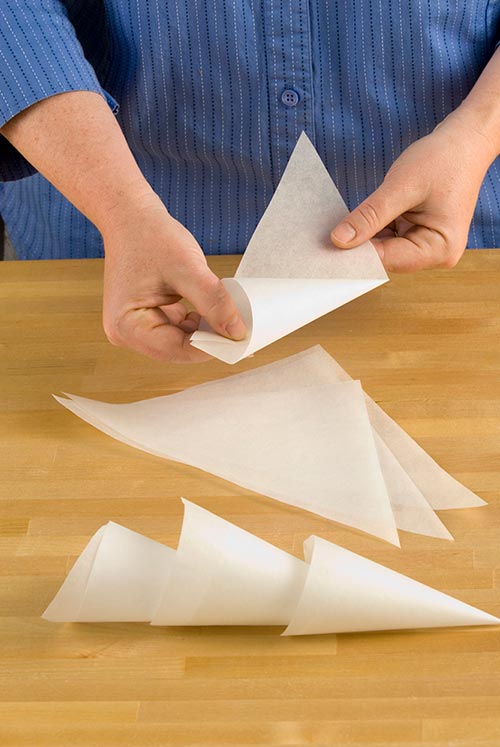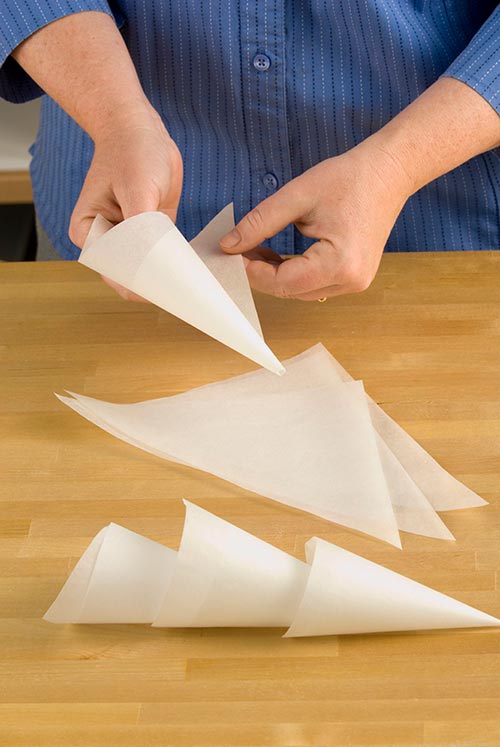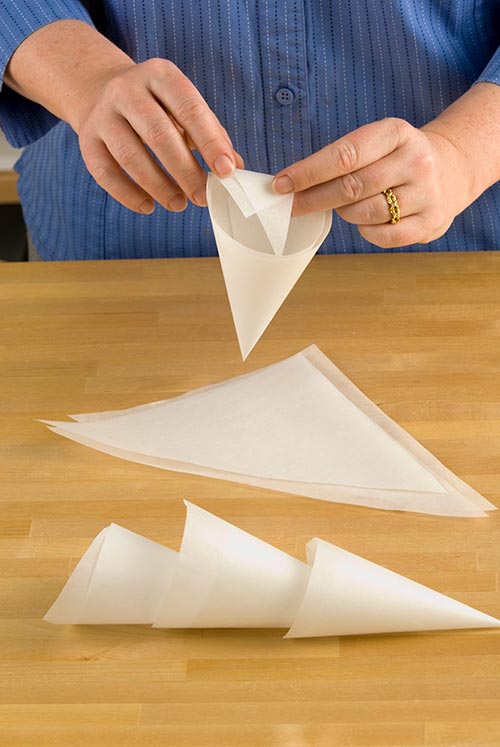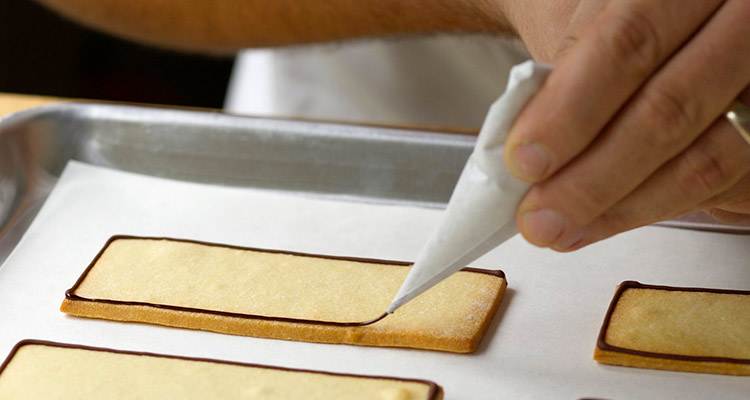When it comes to the fine details on picture-perfect pastries, there is a handy tool all pastry chefs keep in their toolbox: parchment paper cones.
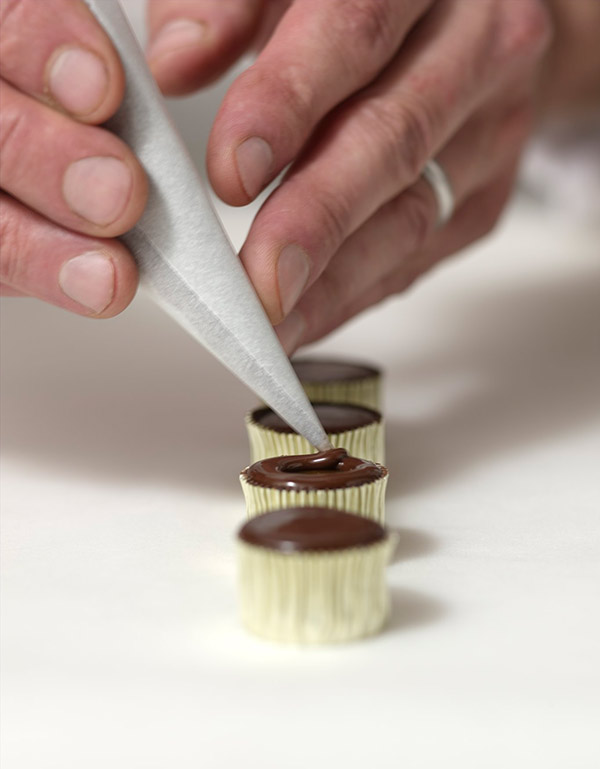
Unlike large piping bags, parchment paper cones are very small. This makes them steady and easy to grip, but it also allows for a very fine opening, smaller than you can achieve with even the smallest of piping tips. You'll see them in use for detail work on cakes, chocolates, and intricate pastries.
The beauty of parchment paper cones is that you can make them yourself with parchment paper that you already have on hand, so you'll never find yourself lost without a piping bag when inspiration strikes. These cones are one of the first lessons taught to CIA baking and pastry students, and are used as often as whisks and spatulas.
Making a parchment cone is simple, though it can take some practice (and patience) to perfect. Once you cone is assembled, you can use a sharp scissor to snip the end to a fine point. Fill the bag about halfway, and fold the excess paper over the filling to keep it from leaking from the top.
